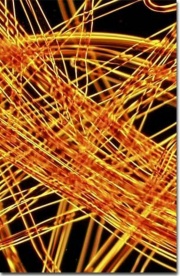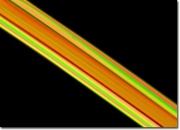Difference between revisions of "Polybenzimidazole"
Jump to navigation
Jump to search
(username removed) |
|||
| (3 intermediate revisions by 3 users not shown) | |||
| Line 3: | Line 3: | ||
A thermoplastic polymer that is stable at high temperatures. Polybenzimidazole (PBI) is made from the reaction of diphenyl isophthalate with diaminobenzidine. It is is primarily used to produce temperature and flame resistant fibers. PBI fibers are resistant to chemicals, do not burn or melt and produce minimal smoke. The fibers accept colors well using basic dyes. PBI fabric is used for flame-retardant and protective apparel, industrial clothing, aircraft upholstery, and insulation. | A thermoplastic polymer that is stable at high temperatures. Polybenzimidazole (PBI) is made from the reaction of diphenyl isophthalate with diaminobenzidine. It is is primarily used to produce temperature and flame resistant fibers. PBI fibers are resistant to chemicals, do not burn or melt and produce minimal smoke. The fibers accept colors well using basic dyes. PBI fabric is used for flame-retardant and protective apparel, industrial clothing, aircraft upholstery, and insulation. | ||
| − | + | [[File:polybenzimidazolelarge.jpg|thumb|Polybenzimidazole]] | |
== Synonyms and Related Terms == | == Synonyms and Related Terms == | ||
| Line 10: | Line 10: | ||
Examples: PBI fiber [Celanese]; Celazole | Examples: PBI fiber [Celanese]; Celazole | ||
| − | + | == Risks == | |
| − | == | ||
| − | |||
| − | |||
| − | |||
| − | |||
| − | |||
| − | |||
| − | |||
| − | |||
| − | |||
| − | |||
| − | |||
| − | |||
| − | |||
| − | Nonflammable. | + | * Nonflammable. |
| − | == | + | == Physical and Chemical Properties == |
| − | + | * Resistant to chemicals | |
| + | * Moisture regain = 15% | ||
| + | * Elongation = 27% | ||
| + | * Tenacity = 2.7 g/denier | ||
| + | * Composition = [-C7H6N2-]n | ||
| + | * Density = 1.43 g/ml | ||
| − | == | + | ==Resources and Citations== |
| − | * | + | * Theodore J. Reinhart, 'Glossary of Terms', ''Engineered Plastics'', ASM International, 1988 |
| − | * | + | * Richard S. Lewis, ''Hawley's Condensed Chemical Dictionary'', Van Nostrand Reinhold, New York, 10th ed., 1993 |
| − | * | + | * Hoechst Celanese Corporation, ''Dictionary of Fiber & Textile Technology'' (older version called Man-made Fiber and Textile Dictionary, 1965), Hoechst Celanese Corporation, Charlotte NC, 1990 |
| − | * | + | * Marjory L. Joseph, ''Introductory Textile Science'', Holt, Rinehart and Winston, Fort Worth, TX, 1986 |
[[Category:Materials database]] | [[Category:Materials database]] | ||
Latest revision as of 13:21, 22 October 2022
Description
A thermoplastic polymer that is stable at high temperatures. Polybenzimidazole (PBI) is made from the reaction of diphenyl isophthalate with diaminobenzidine. It is is primarily used to produce temperature and flame resistant fibers. PBI fibers are resistant to chemicals, do not burn or melt and produce minimal smoke. The fibers accept colors well using basic dyes. PBI fabric is used for flame-retardant and protective apparel, industrial clothing, aircraft upholstery, and insulation.
Synonyms and Related Terms
PBI; polibencil imidazol (Esp.); polibenzimidazol (Port.)
Examples: PBI fiber [Celanese]; Celazole
Risks
- Nonflammable.
Physical and Chemical Properties
- Resistant to chemicals
- Moisture regain = 15%
- Elongation = 27%
- Tenacity = 2.7 g/denier
- Composition = [-C7H6N2-]n
- Density = 1.43 g/ml
Resources and Citations
- Theodore J. Reinhart, 'Glossary of Terms', Engineered Plastics, ASM International, 1988
- Richard S. Lewis, Hawley's Condensed Chemical Dictionary, Van Nostrand Reinhold, New York, 10th ed., 1993
- Hoechst Celanese Corporation, Dictionary of Fiber & Textile Technology (older version called Man-made Fiber and Textile Dictionary, 1965), Hoechst Celanese Corporation, Charlotte NC, 1990
- Marjory L. Joseph, Introductory Textile Science, Holt, Rinehart and Winston, Fort Worth, TX, 1986

